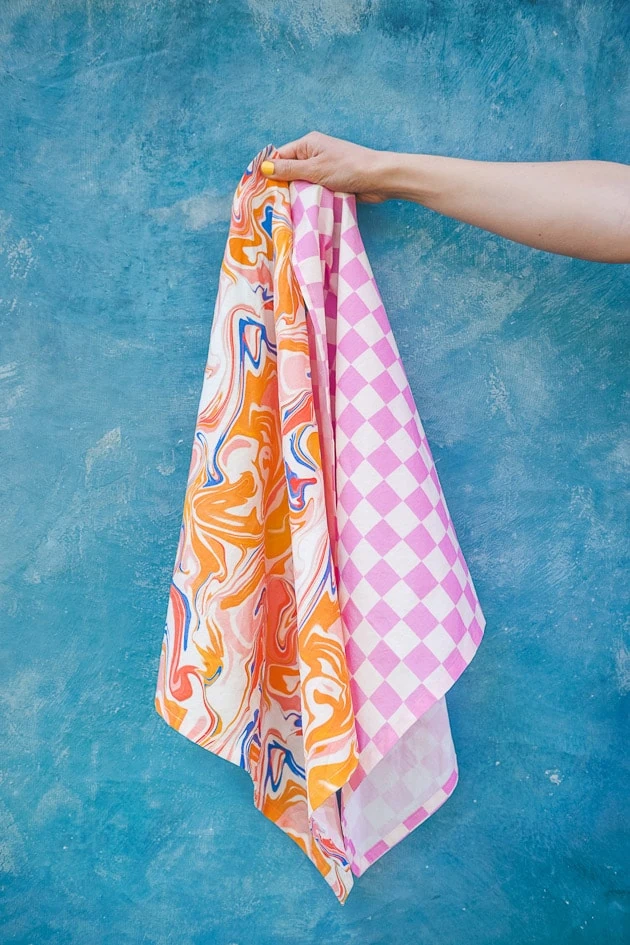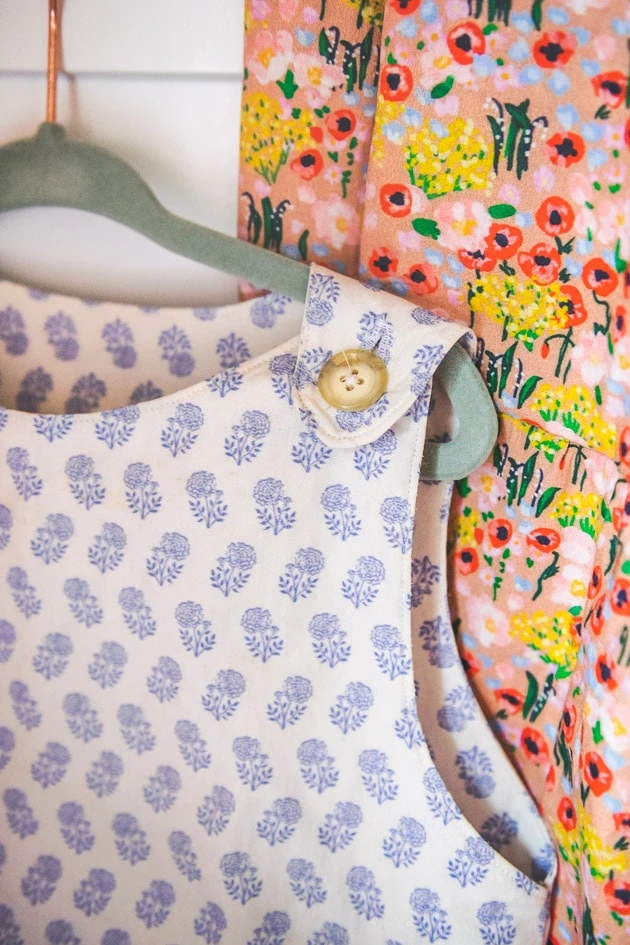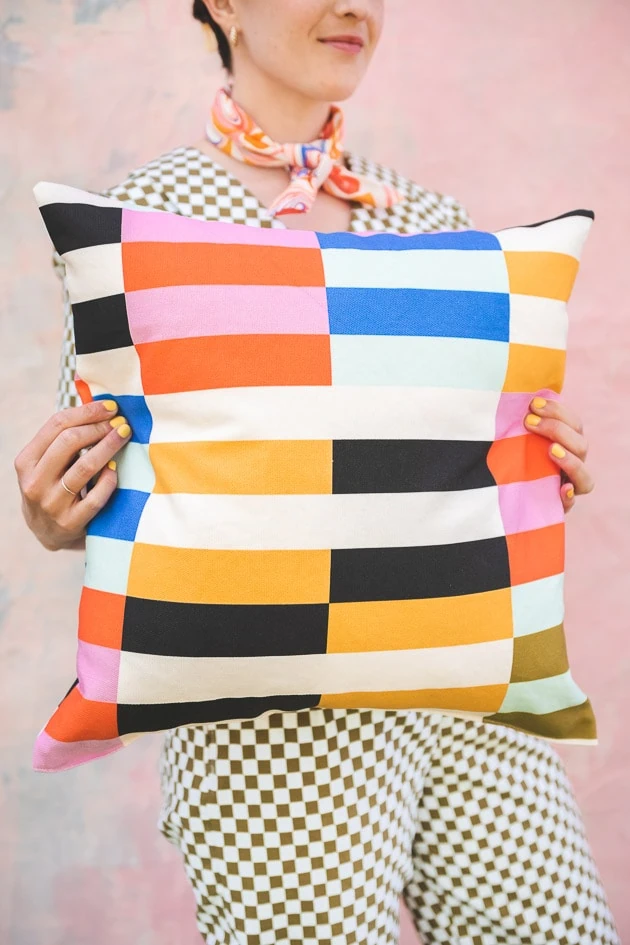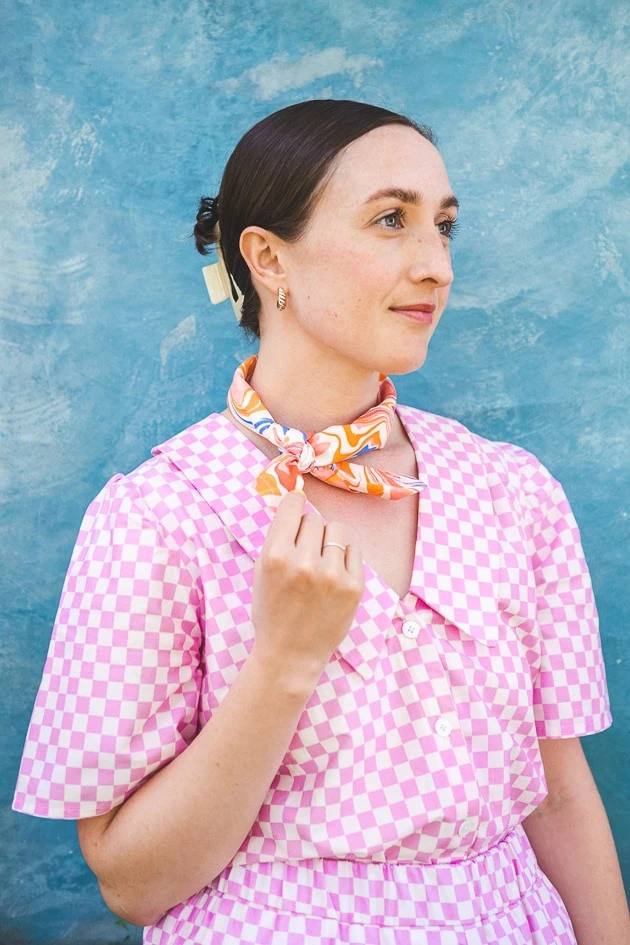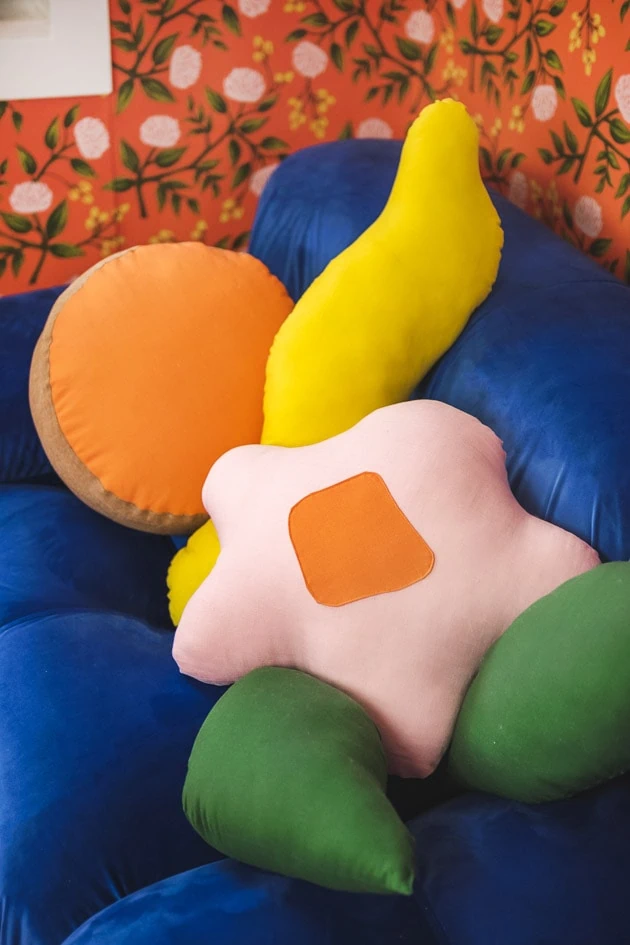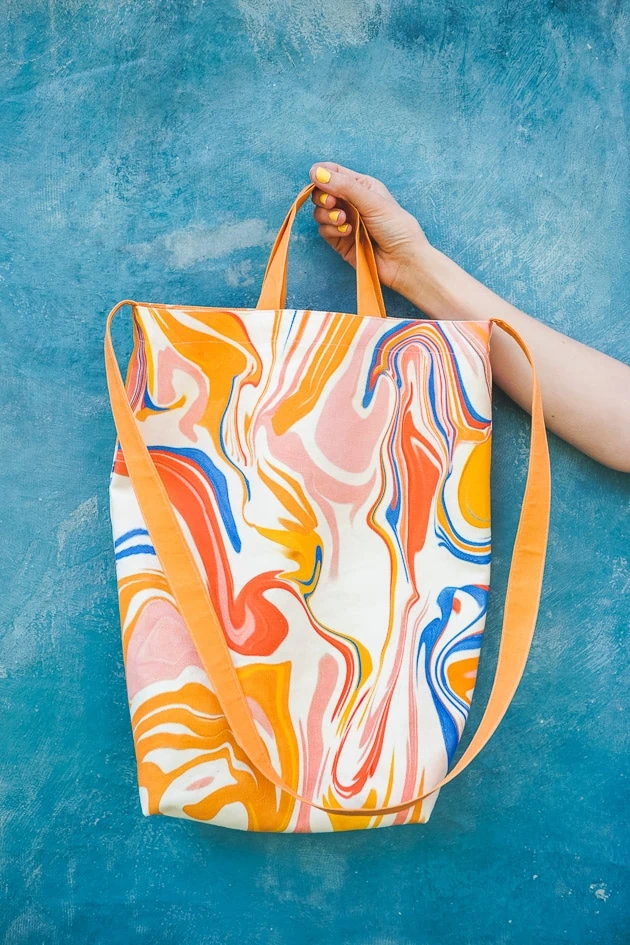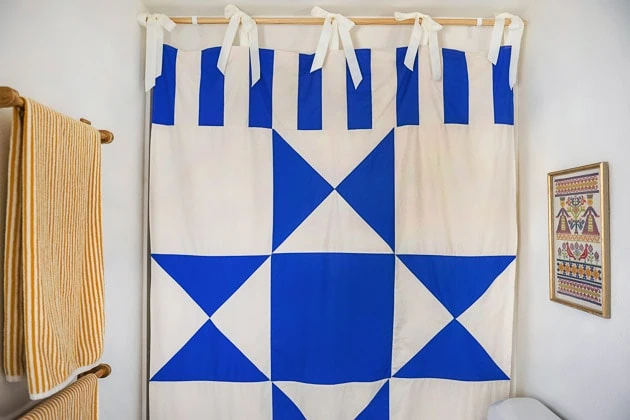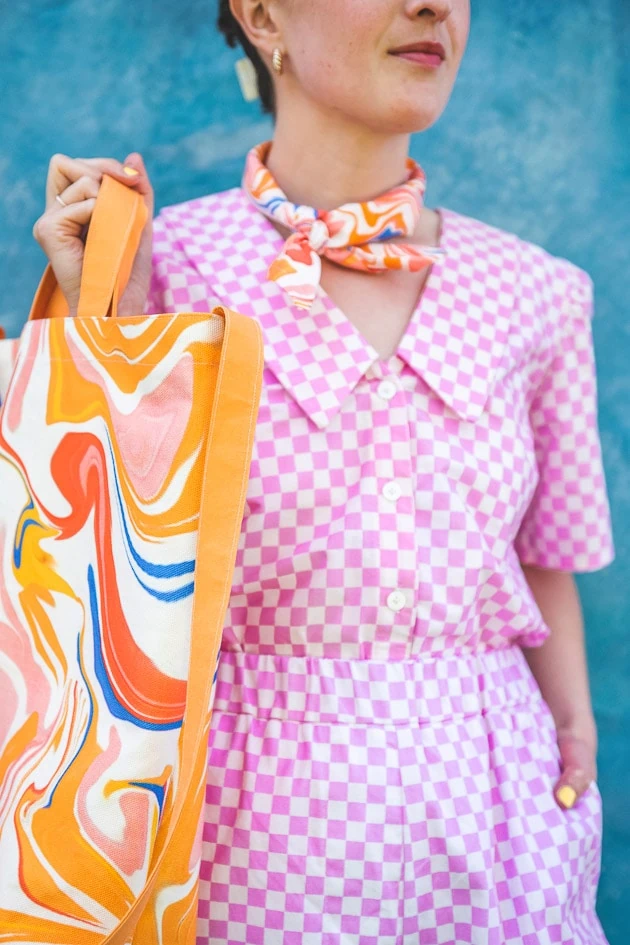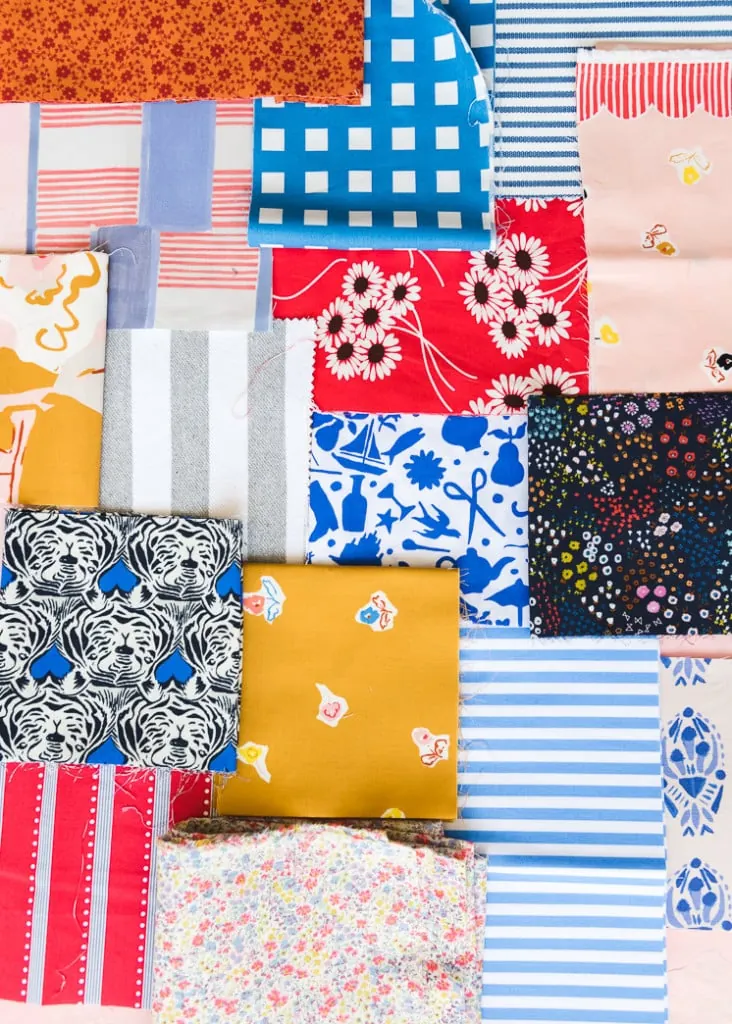
Welcome to the second week of our Sewing Basics series!
We know that many of you are already familiar with the sewing basics, but we also know that many of you have a lot you would like to learn. In order to bring everyone up to speed, we’ve decided to help you out with some essential sewing skills that will help you succeed at a wide variety of basic sewing projects.
This Sewing Basics series is designed to give you the basic skills you need to get sewing! It’s for sewing projects you’ve wanted to make but have been a bit intimidated by until now. For those who’ve already learned the basics at some point, it’s a great refresher. For those who are completely new to sewing, it’s the perfect place to start.
Last week we learned how to thread a sewing machine. This week we’ll learn how to choose the right fabric. Let’s go!
Why the Fabric You Choose Matters
First of all, some of you may be asking, why does the fabric you choose even matter? Well, short answer: it does, and makes a big difference in how well your project turns out. I’ll use a bad example to illustrate my point: a heavy, upholstery canvas for a summer blouse. This is an obvious one, but there are some that are not so easy to figure out on your own! Especially if you’re not familiar with many types of fabrics and their specific uses. So we’re going to break things down a bit and help you understand the ins and outs of how to choose the right fabric.
Synthetic vs. Natural Fabrics
It turns out there’s a lot to unpack when considering which fabrics to use on a given sewing project! In order to choose the right fabric, it’s crucial to know the difference between natural and synthetic fabrics. They are what their names suggest, but they each have pros and cons.
Natural Fibers
Natural fibers come from natural sources that have not been synthetically modified. These can come from animal or plant sources. Examples of natural fibers include cotton and linen (plant sources); and silk, wool and cashmere (animal sources).
Pros
- More breathable and moisture wicking (nice in hot/humid climates and in the summer months)
- Production doesn’t produce poisonous gases
- More gentle on sensitive skin (most of the time)
- Biodegradable
- Overall more comfortable than synthetics
Cons
- Not as strong as synthetic fibers
- Shrink when washed
- Sometimes requires hand-washing or dry-cleaning (silk and wool)
- Can be damaged by moths/other pests (especially wools)
- Wrinkle more easily
- More expensive
- Can be itchy (this applies to wool, especially)
Synthetic Fibers
Synthetic fibers are fibers that can be manufactured synthetically, rather than being sourced strictly from nature. They were created to mimic their natural counterparts. Examples of synthetic fibers include polyester, acrylic, nylon, spandex, and lycra.
Pros
- Stronger than natural fibers
- Retain their shape better than natural fibers (think stretched-out knees of your cotton jeans)
- Wrinkle-resistant
- Cheaper than natural fibers
- Resistant to pests, mold, mildew, etc.
- Can be stretchy (think elastic, spandex and lycra)
- Don’t shrink in the wash
Cons
- Not as breathable as natural fibers and not moisture wicking (extra hot in hot weather!)
- Usually more uncomfortable than natural fibers
- Sometimes causes irritation to sensitive skin
- Can be more slippery/difficult to sew on
- Melt if the iron is too hot
Blended/Semi-Synthetic Fibers
Semi-synthetic fibers are natural fibers that have been chemically altered, but less so than fully synthetic fibers. Blended fibers are a blend of natural and synthetic fibers. Both blended and semi-synthetic fibers retain some of the characteristics of natural fibers while also incorporating characteristics of synthetics. For instance, they might retain the breathability of natural fibers while being more wrinkle-resistant than their natural counterparts. Examples of semi-synthetic fibers are rayon, viscose, modal, bamboo viscose, and seacell. Examples of blended fibers are polyester/cotton, cotton/lycra, and acrylic/wool.
Questions to Consider
Now that you know the difference between natural and synthetic fibers, let’s apply that knowledge to your fabric choices. Here are some questions to consider when picking a fabric for your next project:
- Do I want my fabric to be wrinkle-resistant or not?
- Will I need to wash by hand, or can it go in the machine? Also, can it go in the dryer or not? (needing to wash by hand or hanging to dry are not deal breakers. But you definitely want to be aware of these things so you know how to prewash and care for your fabric).
- What season am I making my project for? Does it need to be lightweight/moisture-wicking, or thick and warm?
- Do I have sensitive skin? (a sign that you should steer clear of synthetics and itchy wools)
- Do I prefer a fabric that’s easier to sew on? (If so, avoid stretchy, slippery, and overly thin/thick fabrics).
And finally:
- What is the best overall fabric for my specific project? Pillow vs. tote vs. blouse vs. pants vs. drapes, etc.
Most Commonly Used Fabrics
If you’re still a bit stumped on how to choose the right fabric, we’ve compiled a list of examples. Here are some widely-made projects and the most common fabrics for them:
Clothing
Clothing can be made using woven (not stretchy) OR knit (stretchy) fabrics. Before making your decision, consult the pattern! It will say if it’s meant for knits or woven fabrics. Many patterns even give specific guidelines as to which fabrics are ideal.
Here’s a list of common clothes to make and best fabrics:
- Blouses and Dresses: woven, natural fabrics like cotton and linen often work well. But there are some pretty synthetic/semi-synthetic fabrics out there that are pretty, too! Chiffon, viscose and rayon are all good options. Want to be fancy? Go for silk! Just remember to be gentle when washing.
- Pants: Again, woven, natural fabrics are great. For summer, try a light cotton, linen, or blend of the two. For winter, wool, twill, and a light canvas or denim. And remember that wool and cotton shrink! That means wash in COLD water and probably stick to hand-washing those wools.
- Jackets/coats: Lined cotton and wool make great coats, when you’re in the mood for a more intense sewing project.
Here are some clothing options we’ve made and love! Mother’s Day apron, Easter outfits, quilted face mask, quilted sleeping mask, baby bonnet, bunny bonnet, quilted coat, Father’s Day tie and bowtie, garden apron pattern and FUNKY TOWN bandanas.
Throw Pillows
There are quite a few options that would work well for a throw pillow! If you’re going for a softer feel, try a lighter fabric like cotton or linen, or even a light velvet. Want something more substantial? Go for a canvas or other upholstery-weight fabric. The key here is that woven fabrics work MUCH better for a pillow with some shape than knits.
Here are some we’ve made:
FUNKY TOWN throw pillow, Shaped throw pillows, Celtic knot pillow and stuffed Easter bunny.
Totes and Bags
For totes and bags, generally woven canvas or denim of some sort works best. Steer clear of knits and make sure the fabric you choose is durable and you’re all set!
FUNKY TOWN tote, Lemon Tote bag, duffel bag picnic tote, Reusable lunch sack and DIY beeswax wrap.
Blankets
Blankets and quilts also demand woven fabrics. Try lightweight cotton or linen and you’ll be golden.
Try this duffel bag picnic tote, which doubles as a blanket! Also try this mushroom playmat, which is essentially baby-sized quilt.
Curtains/Other Home Decor
For curtains, you could go with a variety of fabrics depending on what you prefer! If you want a breezy, summery curtain that still lets some light in, try lightweight cotton or linen. Again, woven fabrics are your best friends here. Want a good blackout curtain? Try a double lined curtain and go with a thicker, tighter cotton/linen weave or a velvet.
Here’s our quilted shower curtain and DIY headboard.
Fabric Resources
Well, that’s a wrap on how to choose the right fabric. Still looking for resources? Cough, cough. Officially launched yesterday, we now have a shop full of designs created by The House that Lars Built! You can find them here. During COVID, we also compiled a list of our favorite fabrics from around the web. There are so many options we ADORE. Check them out here!
Did we answer your questions on how to choose the right fabric? Let us know in the comments!



